All aboard...!

Consist
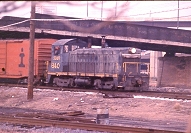 |
Camden Yard in the 1970s and 1980s - before Oriole Park and a statement by some pinhead judge that "when people hear 'Camden Yards' they think of baseball..." |
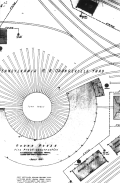 |
Orangeville (near Highlandtown in East Baltimore), the Pennsylvania Railroad's locomotive facility |
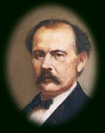 |
Odenton, Maryland - a town built around the Baltimore & Potomac Railroad in the 1800s, served by the Pennsylvania until the 1960s and still served by MARC
(the Maryland commuter rail system) today |
Of course there are other beloved remnants of the Golden Age.
One of my personal favorites - other than mechanical interlocking - is the Baltimore
and Ohio's Color-Position Light (CPL) signals.
|
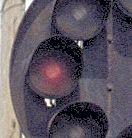 |
Graphic depictions of the B&O signal indications from 1941. |
 |
Graphic depictions of the B&O signal indications from 1941. |
|
Pictures of the Baltimore & Ohio near Mount Royal Station in Baltimore
Since there has been such overwhelming indifference to my tale of how I got started watching trains, I'm leaving it here for the world to see (sorry, world!):
WHEN I WAS but a wee lad of eight years I spent a lot of summer days at my Aunt Estelle's house at 13 Hill Street in Annapolis. Near the back of Aunt Estelle's house was a small, somewhat steep hill, and
along the bottom of that hill ran the tracks of the Baltimore and Annapolis Railroad. Since the railroad was waning due to heavy competition from trucking the B&A ran only two or three trains a week into
town - a special train of coal cars for the U. S. Naval Academy's steam plant at the corner of King George Street and MD route 450, or a mixed jumble of coal for the Henry B. Meyers
(who had a coal trestle behind the bus station and Rescue Hose fire station on West Street), plus giant rolls of newsprint for the Evening Capital, lumber for Meredith Roane lumber on "outer" West Street and a LCL boxcar of other
varied and sundry freight for the warehouse that was also behind the bus station.
Being an inquisitive child I began to ask questions of my mother and my aunts and uncles who had grown up in that very neighborhood; they related grand tales of shiny metal interurban cars that rumbled down
the rails at what seemd like high speeds at that time (the 1930s and 1940s) and of old rickety wooden cars with windows that wouldn't open in the middle of August - or close in the throes of a January blizzard. I was fascinated, and an amateur railroad historian was born.
As the years went on I discovered the Maryland State Archives in a small brick building on the grounds of St. John's College in Annapolis. I learned, through files held there, that the trains I watched as a child
ran on tracks that were on the very same roadbed as had been originally surveyed and built for the Annapolis and Elk Ridge Rail Road in 1831. Though I hadn't known it when I was but a wee lad of eight, I
was watching the final act of a play that had been running on the same stage for over 130 years.
How can I not be interested in railroad history after that!

|
Safety First
|

|
In 2007...
2,728 vehicles raced trains to grade crossings - and tied;
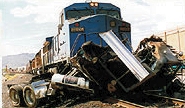
339 people in those vehicles died
486 people were killed while trespassing on railroad property
Don't become a statistic - look, listen and live!
Last updated Friday, December 5, 2008








